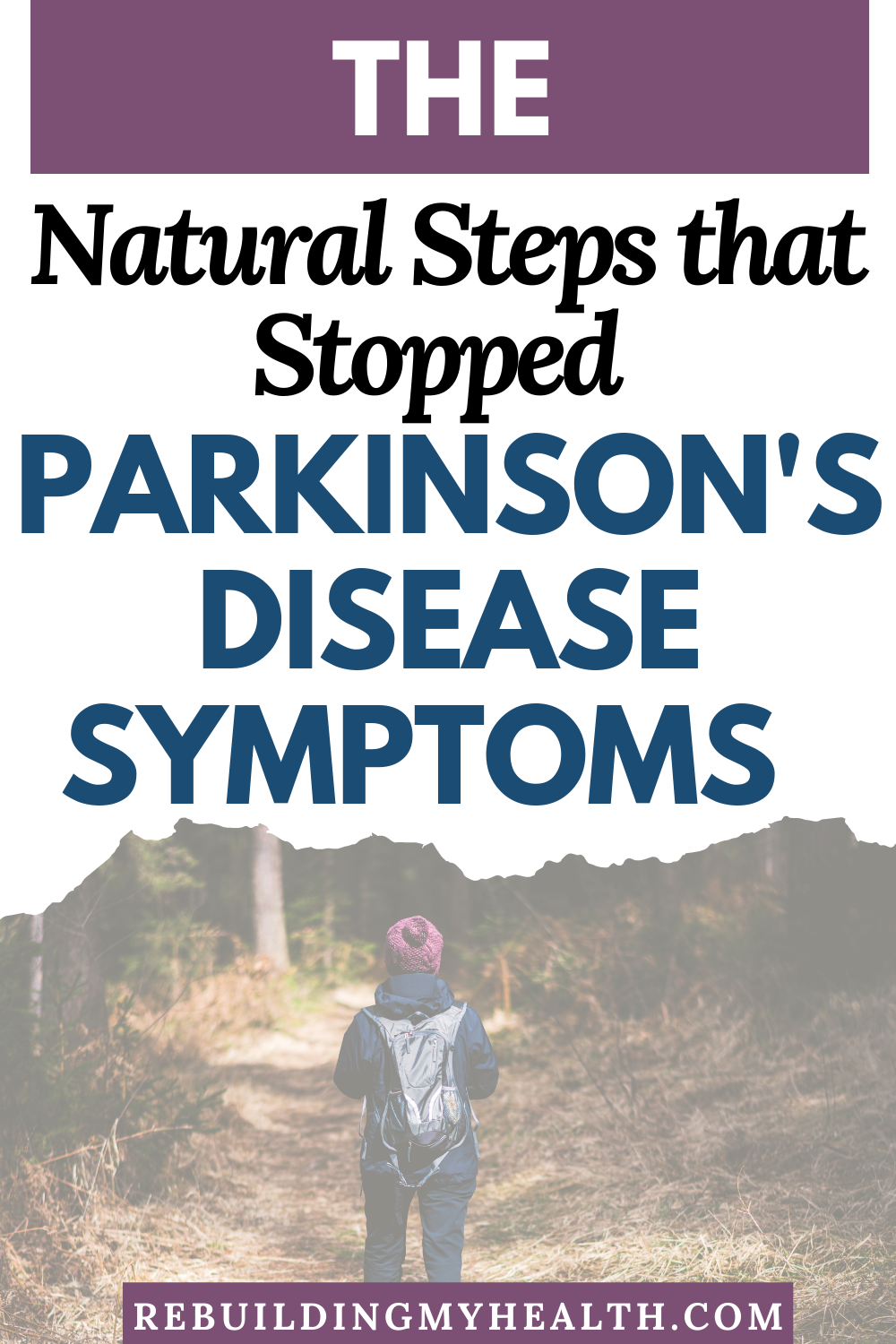A North Carolina Woman Treats Parkinson’s Naturally – and Sends Symptoms Packing
“I was walking probably 95% normal for the first time in over a year.”
– Cynde
Listen to Cynde’s story on the Rebuilding My Health Radio podcast:
For years, Cynde and her husband have enjoyed long evening walks around their home near Charlotte, NC. On top of that, she walks solo each morning, adding up to several miles every day.
Thus, when the way she walked changed, her husband immediately noticed. At first, she no longer swung her left arm. Then, her gait became awkward until, eventually, she used a walker.
“It started getting worse and worse,” she recalls, “to the point where we actually stopped walking at night because I couldn’t walk anymore.”
Her neck and shoulders also grew increasingly rigid and painful to the point where she couldn’t turn her head. The rigidity affected every part of her day: getting dressed, showering, brushing her teeth, typing and even thinking. On top of it all, she had tremors and anxiety for the first time in her life.

Parkinson’s Symptoms… on Just One Side
Cynde’s left side seemed to be shutting down. When she saw a neurologist, he suggested that it couldn’t be Parkinson’s disease because her symptoms were only on one side. Instead, he suspected multiple sclerosis (MS).
And yet, an MRI of her neck and brain only turned up signs of a serious concussion she had sustained as a child. With MS, lesions typically show up in the brain.
Cynde’s own exhaustive research, however, did point to Parkinson’s. “For many people, it starts on only one side,” she learned.
Frustrated, she sought relief on her own. A longtime believer in natural health, she tried acupuncture and cranial sacral therapy, which made her feel better generally, but didn’t alleviate her symptoms.
She also spent a week at a natural neuroscience center for testing, which only turned up a gluten sensitivity. But Cynde already ate a gluten-free diet. Now, she took it a step further to ensure all her skin products were also free of gluten, but unfortunately, she didn’t notice any difference in her health.
Dental Amalgams and Parkinson’s Disease
Cynde’s research had turned up a correlation between heavy metals toxicity and Parkinson’s, leading her to get her mercury dental amalgams removed. Amalgam fillings have also been associated with an increased risk of Parkinson’s disease.
With help from a holistic dentist, she carefully had 15 fillings extracted.
Following the extraction, she detoxed her body using charcoal and a couple of other detox protocols. Remarkably, her cognition improved.
“I did see a difference in my health after the amalgams were removed,” she says. “It basically had to do with cognitive issues. I had a lot of trouble remembering words, or remembering how to do things on my computer that I’d done a thousand times. I definitely saw a huge improvement in that area.”
Natural Solutions for Parkinson’s
Online, Cynde had been following Dr. Greg Eckel, a naturopathic and Chinese medicine doctor at Energy4Life Centers, located across the country in Portland, Oregon.
She pursued testing, while still in North Carolina, through Dr. Eckel’s office. Testing assessed Cynde’s microbiome, infections, hormones and heavy metals toxicity, but none of them turned up any red flags. No gut dysbiosis, infections or heavy metals.
Next, she flew out to Portland for six days of additional testing, treatment and, she hoped, answers. Able to evaluate Cynde in his office, Dr. Eckel finally gave her the diagnosis she expected: Parkinson’s disease.
“It was basically the first time somebody told me, ‘You have Parkinson’s,’” she says.
Cynde started on a treatment plan focusing on nerve health and cellular regeneration. She began taking omega-3, glutathione, uva ursi and adrenal support.
Her cellular regeneration included three hours a day hyperbaric oxygen, along with acupuncture, laser light therapy on her upper back and mesenchymal stem cell therapy. She received six million stem cells intranasally and three million via IV therapy. She’d have to be patient, though; the stem cells could take up to nine months to make a difference, she learned.
Mucuna for Parkinson’s Disease
Once back at home, Cynde added to that regimen by trying mucuna pruriens. Mucuna is derived from a bean grown in the tropics and contains the natural form of levodopa, which is used in Parkinson’s medications. Yet for some, mucuna may be better tolerated than medications.
Studies have shown mucuna to be effective in improving motor ability with fewer adverse effects and fewer dyskinesias (the uncontrolled, involuntary movements seen with Parkinson’s) than with Parkinson’s medications.
Twice a day, she mixes mucuna in with her green tea, which she learned helps mucuna pass the blood-brain barrier more effectively.
Within two hours of taking mucuna the first time, Cynde noticed a difference. When she walked across the room, she realized she was walking normally. In fact, she was so surprised that she walked back and tried again.
“I was walking probably 95% normal for the first time in over a year,” she says.
Now, she takes mucuna twice a day, and notices it kicks in usually within half an hour. She walks mornings and evenings, for a total of four to five miles each day, and she times the mucuna to be in effect for those outings.
Instead of the .7 mph she tracked before, now she walks about 3.6 mph. When using the mucuna, her gait is back to normal. In between doses, she walks with a slight limp.
If she skips taking mucuna for a couple of days, she may notice her limp worsen but she doesn’t experience a full scale regression.
“That’s where I think the stem cells come in,” she says. “I can still go out and walk and I can still do what I want, but it’s just easier if I take mucuna. I think the stem cells definitely did do something because I don’t go back to where I was before.”
No Signs of Parkinson’s Disease
With all her efforts, Cynde has zero noticeable signs of Parkinson’s today. No more pain, stiffness, cognitive issues or anxiety. In fact, she delights in surprising friends and family who haven’t seen her in a while with her jaw-dropping progress.
For maintenance, she continues taking omega-3, glutathione, mucuna and vitamin B-1. Her diet is also free of gluten, dairy and eggs to reduce inflammation.
Out of everything she’s done, the mucuna, stem cells and vitamin B-1 seem to make the biggest difference. When she ran out of B-1, she noticed some rigidity creeping back in.
She also stresses the importance of exercise. “The first thing that I do for maintenance is exercise,” she says. “I think that’s the biggest thing with Parkinson’s is you have got to move.”
Cynde took a winding path to find what worked for her. But the end justified the means.
“Feeling better makes it all worthwhile,” she says. “You’ve got to listen to your body. I’ve always been a firm believer of your body can heal itself.”
If you enjoyed this story, you might also enjoy: Parkinson’s Disease Symptoms Down by 90% in Part with Stem-Cell Patches.
The information on this site is for educational and inspirational purposes only and is not intended to replace the advice of qualified professionals. Keep in mind that what works for one person may not work for another. Always consult your healthcare practitioners before beginning new approaches or treatments. Some links on Rebuilding My Health may be affiliate links. This means that we may receive a commission - with no additional cost to you - if you make any purchases using those affiliate links. Rebuilding My Health is a participant in the Amazon Services LLC Associates Program. Learn more.


